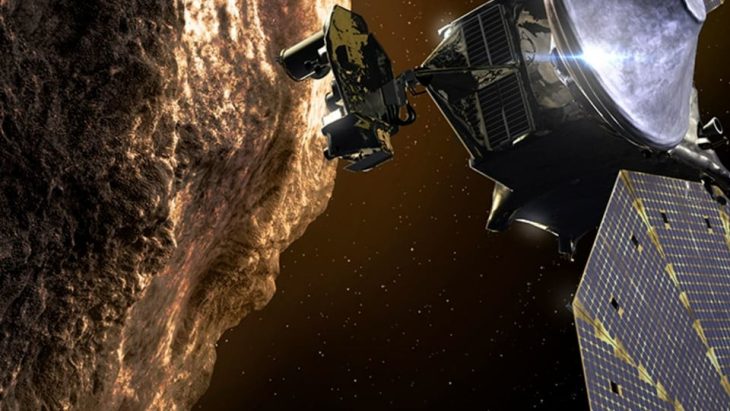On October 16, 2021, as the United Launch Alliance’s Atlas V rocket deployed the Lucy spacecraft successfully, engineers were in a mood of jubilation, but it was all about to change. Just hours into its flight, the spacecraft beamed back data that showed an anomaly as it traveled away from the planet.
While no one knew it at the time, one of the solar panels – designed like a hand fan – had not fully opened and the 12-year-long flight that was to be powered by solar energy all along had already started having hiccups. With the spacecraft on its way towards Trojan asteroids, the question on Earth began rising.
What happened? Was the array open at all? Was there a way to fix it? Would Lucy be able to safely perform the maneuvers needed to accomplish its science mission without a fully deployed array?
WHAT IS LUCY MISSION?
Named after an ancient fossil of a pre-human ancestor, Lucy is the first solar-powered spacecraft to venture towards a group of rocky bodies known as the Jupiter Trojan asteroids. This is the first such mission to run on solar energy while going billions of kilometers away from the Sun’s solar influence. The spacecraft during its 12-year flight will first encounter asteroid Donaldjohanson in the Main Belt, between Mars and Jupiter.
Before reaching its destination, the spacecraft will have to conduct three Earth flybys for a gravity assist, making it the first spacecraft to return to our planet’s vicinity from the outer solar system. Between 2027 and 2033, it will encounter seven Trojan asteroids — five in the swarm that leads to Jupiter, and two in the swarm that trails the gas giant.
THE PROBLEM ONBOARD
As the problem continued, Nasa brought together the anomaly response team, comprising members from science mission lead Southwest Research Institute (SwRI) in Austin, Texas, mission operations lead Nasa’s Goddard Space Flight Center in Greenbelt, Maryland, spacecraft builder Lockheed Martin, and Northrop Grumman in San Diego, who had designed the solar array system.
This team launched a deep dive to identify the root cause of the problem. The team then evaluated the solar panel configuration by firing the thrusters and gathering data on how those forces made the solar array vibrate. This helped uncover the issue, which was that “a lanyard designed to pull Lucy’s massive solar array open was likely snarled on its bobbin-like spool.”
“We have an incredibly talented team, but it was important to give them time to figure out what happened and how to move forward. Fortunately, the spacecraft was where it was supposed to be, functioning nominally, and most importantly safe. We had time,” Hal Levison, Lucy’s principal investigator said.
FIXING LUCY IN SPACE
The team then identified two ways to fix the stuck solar panels. One was to pull harder on the lanyard by running the array’s backup deployment motor at the same time as its primary motor and the other was to use the panel as it was since it was early fully deployed and generating more than 90 per cent of its expected power.
Over the next few months, the team charted a course for the spacecraft to see what could happen if these two options are used. They finally decided to go with the first one. After months of simulations and testing, the team commanded the spacecraft to simultaneously run the primary and backup solar array motors on seven occasions between May and June.
The gamble paid off and the solar panels were further out, between 353 degrees and 357 degrees open out of 360 total degrees for a fully deployed array, Nasa said.
The spacecraft is now ready for its first Earth-gravity assist set to take place in October this year before it goes to its first destination in 2025.






